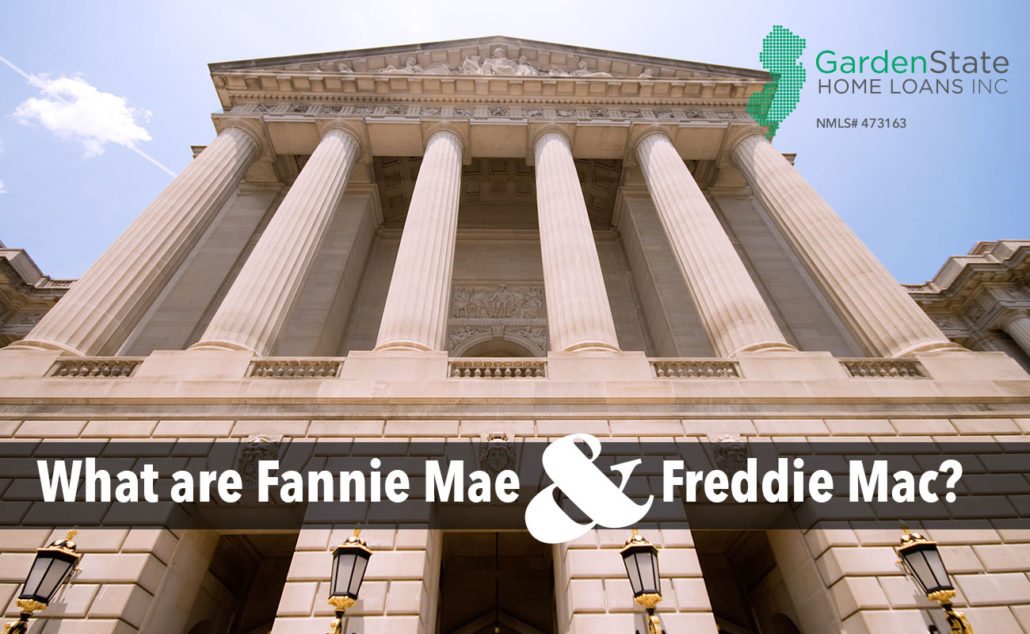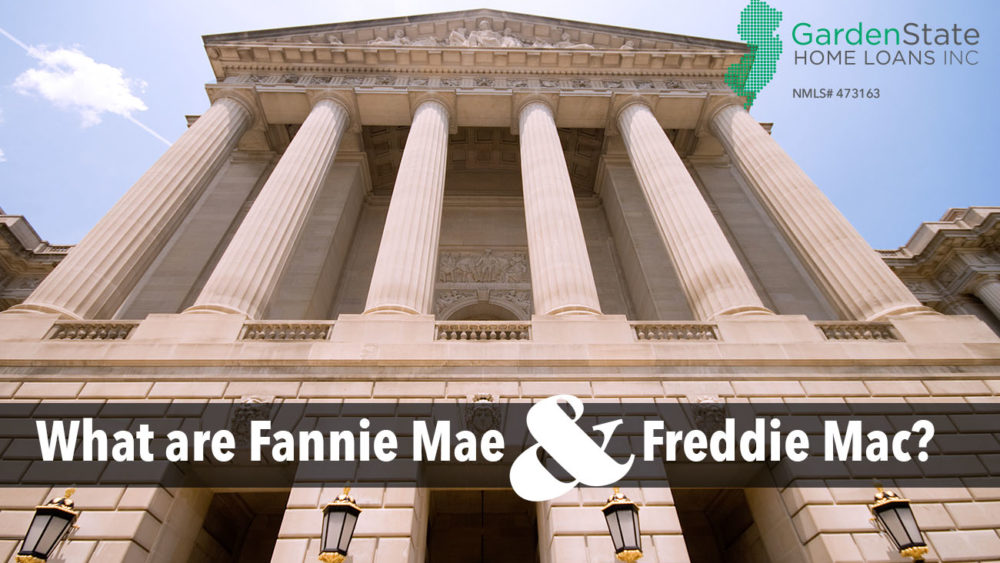If you’re looking into getting a mortgage, you may find yourself asking “Who are Fannie Mae and Freddie Mac and what do they want with my mortgage?” But, that’s the wrong question. Fannie Mae (Federal National Mortgage Association) and Freddie Mac (Federal Home Loan Mortgage Corporation) are Government Sponsored Enterprises, or GSEs. A GSE is a company founded by the government, typically in the financial sector, in order to stabilize markets and regulate cash-flow. Fannie Mae and Freddie Mac operate in what is known as the secondary mortgage market, and function to keep the mortgage industry healthy and active for borrowers and lenders.

What are Fannie Mae & Freddie Mac?
Fannie Mae
Fannie Mae was established in 1938 as a part of then-president FDR’s New Deal. It was started as a publicly-traded company and tasked with expanding the secondary mortgage market. The secondary mortgage market refers to the relationship between lenders and mortgage companies and Fannie Mae. Fannie Mae buys mortgages from lenders, which is why you may face the question of whether or not Fannie Mae owns your mortgage. In buying these mortgages, Fannie Mae replenishes lenders’ assets and empowers lenders to lend to more borrowers. This stimulates the mortgage market and keeps borrowers coming to lenders for their mortgage needs, since they would see the lender as a reliable company to work with. Additionally, Fannie Mae bundles the mortgages it buys into mortgage-backed securities (MBSs), one of the principal types of asset that the Federal Reserve holds and trades.
In 1968, Fannie Mae was split into a private company and a government agency. The private company, still Fannie Mae, continued to operate in the secondary mortgage market and perform its task as usual. The government agency, Ginnie Mae (Government National Mortgage Association), was placed under the jurisdiction of the Department of Housing and Urban Development (HUD) and empowered to give affordable housing aid to low-income families.
Fannie Mae offers assistance programs to single-family and multi-family homes, mainly through affordable mortgage and homeownership options, as well as affordable rental opportunities.


Comments are closed.